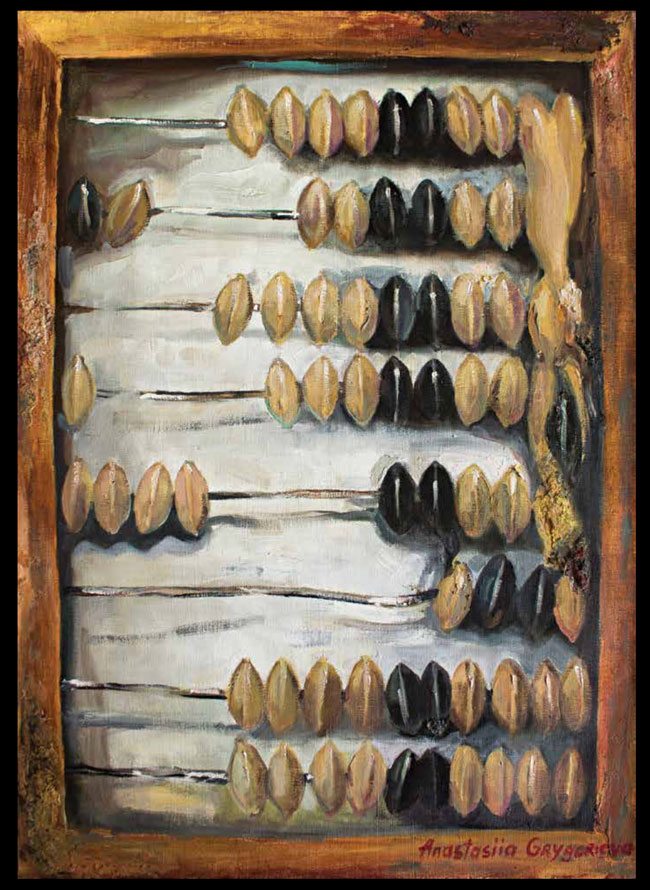
This article is from the Nonprofit Quarterly’s fall 2017 edition, “The Changing Skyline of U.S. Giving.”
Two topographies define the landscape of American giving. One is marked by majestic ascent. Over the past half century, the amount of money Americans give to charitable causes has steadily increased each year, except during times of recession. The earliest comprehensive tabulations of annual total giving, prepared for the Giving USA reports in the 1950s, were presented under the heading “The March of Philanthropy,” suggesting the confident spirit with which they were interpreted. That spirit endures. The 2017 Giving USA report announced a record high of just over $390 billion given to charitable causes in 2016, an increase of 2.7 percent from the year before. Even in such an “unusual year,” the report’s authors declared, “Americans continued to be generous.”1
An alternative statistic, total charitable giving as a share of gross domestic product (GDP), describes another feature of the giving landscape—one that tempers that triumphalism. Instead of steady growth, its trend line is notable for its relative flatness. For the past five decades, total giving as a share of GDP has hovered around the 2 percent mark; for the last three years, it’s stayed remarkably steady, at 2.1 percent.2 Measures of individual giving as a share of disposable personal income have also generally held around 2 percent.
The persistence of this 2 percent figure is one of the great, enduring mysteries of philanthropy. No nation can claim a higher percentage, and runners-up routinely see 1 percent or less, so in many respects it’s another register of American exceptionalism.3 But our inability to move much beyond the 2 percent threshold forces us to confront an uncomfortable sense of charitable limits. It’s the stubborn constraint on the index of American generosity.
The figure also presents a host of normative questions that the total aggregate number does not. Though $390 billion can buy a lot of mosquito nets, the number cannot tell us if we should be buying more. Considerations of charitable giving within the context of national economic accounts, on the other hand, move the conversation into an ethical register. They touch on a belief in certain defined responsibilities of wealth, much as tithing does in a religious context or progressive taxation does in a civic context. The 2 percent threshold compels us to probe the nature of America’s giving culture more closely and to examine the numbers and metrics we use to do so.
The past century saw three main waves of interest in charitable statistics, each reflecting the perspectives and priorities of the fields that initiated them: early social work practitioners; midcentury state planners; and the fundraising community. In the late nineteenth and early twentieth centuries, a movement on behalf of “scientific charity” was at the forefront of collecting and compiling quantitative data on philanthropy. Its leaders were largely academics and practitioners—many within the nascent social work profession—who were just beginning to think nationally about the social ills they sought to attack, but lacked the statistical tools to do so with any rigor. They were, in any case, much more focused on how charitable giving functioned locally. Although the major work of the period—Amos Warner’s 1894 survey American Charities—offers an estimate for total charitable giving (approximately $200 million, a figure Warner arrived at by extrapolating data from Massachusetts), it is an offhand calculation.4 Warner marshals most of his statistics toward understanding the causes and extent of dependency and “degeneracy,” and how charitable agencies should address those social maladies.
These scientific charity reformers were not primarily interested in increasing American giving; they were convinced that much charitable giving was unthinking, redundant, or wasteful, and sought to discipline giving by channeling it through centralized institutions. These institutions developed some rudimentary charitable statistics, but the accounting was not particularly demanding, partly because giving by the wealthy remained shrouded in privacy. Christian ethics dictated that the left hand should not know what the right hand was doing, which made it hard to compile accurate tallies.
In the twentieth century, the cloak of individual discretion long thrown over philanthropy began to slip away. Millionaire “giving lists” highlighted major benefactors, and community chests in cities across the nation carefully monitored giving levels by income. More important, a second wave of interest in tracking charitable statistics was sparked by the federal income tax established in 1913 and the charitable deduction introduced four years later. These additions to the tax code created a new data source channeled through and mediated by what was then the Bureau of Internal Revenue. From that point forward, the Internal Revenue Service (IRS) fundamentally shaped how we measure charitable giving.
By the 1930s, statistics had emerged as a more sophisticated discipline, incorporating probability theory, econometrics, advanced sampling techniques, and accounting, and was eagerly wielded by a rising corps of state planners. In the aftermath of the Great Depression and in the midst of the New Deal and World War II, these researchers took up a focus on charitable statistics and the role of philanthropy in broader economic life as part of an effort to determine the proper boundaries between the public and private sectors. They appreciated that the data available on charitable giving were incomplete. One of the leading scholars on philanthropy at the time, F. Emerson Andrews, announced in his influential 1950 monograph Philanthropic Giving that “accurate information on total giving in the United States does not exist.”5 But these researchers were committed to building on the data contained in the IRS’s Statistics of Income to arrive at the most complete picture of national charitable statistics possible.
With funding from the Russell Sage Foundation, several researchers at the National Bureau of Economic Research (NBER) began to refine charitable statistics and aggregate giving figures from 1929 to 1959. Their focus on developing national economic policy shaped their methodology and the expansive definition they applied to charitable giving—one that went well beyond the boundaries established by the IRS. The NBER researchers combined private philanthropic giving with what they termed “public philanthropy”—that is, government spending on social welfare programs. Much like gross national product (GNP)—an indicator that the NBER helped develop—included governmental expenditures as part of the national product, so, too, would the NBER’s figures on aggregate charitable giving incorporate governmental spending. With this spending included, total philanthropic giving routinely measured above 10 percent, and reached as high as 12 percent at the end of the 1950s. As Frank Dickinson, an economist who wrote a major study based on the NBER research, declared, “The economy now tithes. The scriptural one-tenth has been attained by a generous people!”6
The aggregate figures compiled by the NBER team also contained totals for “person-to-person giving,” the act of “transfer[ring] payments from one person to another outside the family.”7 This giving went largely unrecorded by the IRS but became more common during the postwar years, often in the form of cash remittances sent over- seas to war-ravaged communities. The researchers studied consumer expenditure surveys conducted by the Bureau of Labor Statistics in the preceding decades, and derived from them a standard ratio of institutional giving to person-to-person giving, where the latter was determined to be 40 percent of the former. When these person-to-person giving totals were included, the average share of private giving as a proportion of GNP from 1929 to 1959 stood at 2.7 percent.8 During the late 1950s, it climbed above 3 percent.9
The NBER researchers acknowledged that this inclusiveness complicated the statistical challenge but insisted that “extending the concept of giving beyond the scope of giving to institutions brings the subject of philanthropy into a far more realistic setting.”10 At the very least, their definitions aligned well with their larger aim of understanding philanthropy in the context of a national economy.
Around the mid-twentieth century, another wave of interest in charitable statistics began to form, this one resolutely institutional in its orientation. It was led at first by the nation’s leading fundraising organization, the American Association of Fund-Raising Counsel (AAFRC), which had been tracking its own version of total giving since the 1940s, and whose efforts led to the first publication of Giving USA: Facts about Philanthropy in 1956. Though it initially relied on some of the same research as the NBER team (such as the data in Andrews’s Philanthropic Giving), AAFRC favored a more restricted scope of inquiry, and de ned philanthropy as “private giving for public causes as distinguished from person-to-person giving or tax financed projects.”11
These research efforts were bolstered by the coalescence and maturation of the nonprofit sector in the wake of the congressional investigations of philanthropy in the 1960s (which also triggered a wave of research on American giving).12 In the early 1980s, a coalition of sector-wide organizations (including Independent Sector, the Council on Foundations, the National Charities Information Bureau, and the United Way of America) helped formally establish the National Center for Charitable Statistics (NCCS), which became a program of Independent Sector in 1986, and ten years later moved to the Urban Institute. The NCCS pushed to improve the reporting of charitable statistics by the federal government, and worked on a national classification system of nonprofits (which became the National Taxonomy of Exempt Entities). In addition, Independent Sector, which had been established in 1980 to represent the interests of both grant seekers and grantmakers, created a research program (led by Robert Payton and Virginia Hodgkinson) that sponsored national surveys of giving and volunteering.13
All these efforts reflected a larger development within the field: leaders of the sector began to understand research—including giving statistics—as an important resource that must be collectively cultivated. Although these sectoral organizations did support the resurgence of basic research on civil society and voluntarism coming out of a handful of academic centers, their emphasis was on applied research. Indeed, an instrumental logic lay at the root of much of the interest in the measurement of giving: improving the reliability and rigor of charitable statistics could help in the effort to encourage Americans to give more, and to give more efficiently.14 At the same time, the research would help to delineate the limits of the sector in the face of the exaggerated notions of what voluntarism could accomplish that fueled Republican efforts at devolution and budgetary retrenchment.15
From these considerations emerged a partnership among academic researchers, sectoral organizations, and fundraisers that enhanced the sophistication of Giving USA’s methodology. In the mid-1980s, for instance, AAFRC revised its totals of individual giving since 1946 and worked with economist Ralph L. Nelson to build an econometric model for estimating annual individual giving, using indicators such as personal income totals, Standard & Poor’s 500 Index (S&P 500) stock prices, the number of people between 35 and 64 years old, and even the political party of the president.16 Throughout these developments, the AAFRC’s focus on institutional fundraising, largely refracted through the prism of the IRS’s 501(c)(3) designation, did not waver.
The NBER researchers had anticipated this institutional bias several decades before. They wondered whether the generally high ratio they assigned to person-to-person giving would need to be revised in light of the trend toward the institutionalization of charitable giving, perceptible as early as the late 1950s.17 Their concern is an important reminder that quantitative measures can lag behind the vital socioeconomic trends they are designed to gauge.
Which brings us to the present day, when faith in institutions of nearly all types is waning, and the desire for disintermediation and person-to-person contact is on the rise. These developments, and nascent efforts to ensure that they are reflected in our giving numbers, suggest that we may be witnessing a new wave of interest in charitable statistics. If so, this is an important opportunity to think carefully about why, what, and how we are counting. Here are three questions to consider.
Sign up for our free newsletters
Subscribe to NPQ's newsletters to have our top stories delivered directly to your inbox.
By signing up, you agree to our privacy policy and terms of use, and to receive messages from NPQ and our partners.
1. How Can We Take Advantage of Historical Insights?
The NBER researchers noted that even if one endorsed only the most restrictive definition of philanthropy, the data suggest that private philanthropic giving grew faster than the gross national product over the three decades they studied.18 The data also indicate that giving as a share of GDP shrank in the early 1960s but rebounded at the end of that decade. It fell below 2 percent in the late 1970s, and did not begin to climb again until the 1990s, when increases in individual giving rates outpaced personal income growth. Scholars have tried to understand those trends, and their insights should be more rmly integrated into campaigns to increase levels of philanthropic giving.19
In fact, for all the impressive consistency of the 2 percent number, at higher resolution peaks and valleys begin to appear that can be surveyed. Giving as a share of GDP has fluctuated over the past fifty years between 1.7 percent and 2.2 percent (using Giving USA’s aggregate figures). Various explanations have been proposed for the upticks and downticks, ranging from changes in economic conditions, tax policies, and geopolitical crises to exceptional natural catastrophes. University of Chicago economist John List argues that nearly 40 percent of this variance in a given year can be accounted for by variations in the previous year’s percentage change in the S&P 500 index.20
Such explanations must be mined further to determine which, if any, can serve as levers to increase giving levels and rates.
2. Where Is the “Give” in Giving Statistics?
The history of charitable giving in the United States can highlight opportunities for future growth. But the numbers themselves do not necessarily yield dispositive answers; they must be interpreted through our own preferences and priorities. Most important, researchers examining historical charitable statistics with an eye to increasing giving are confronted with a basic choice: Will those increases come from an amplication of existing trend lines, or a diminution of them? Do we take existing distributions as a given and attempt to wring more money out of them, or do we seek to transform those distributional patterns?
Two examples illustrate this choice, but it applies to nearly every discernable trend line. One of the most striking phenomena over the last fifty years is the steady decline in the proportion of giving directed to religious organizations. In 1972, giving to religious groups as a share of GNP had declined by about a third from the 1960s, when it made up around half of all giving. In fact, removing giving to religious organizations from aggregate charity totals props up the declining trend line of giving relative to GNP in the 1960s so that it appears level.21
Giving to religious organizations as a proportion of total charitable giving experienced a boost in the late 1970s and early 1980s, but then its relative decline recommenced. As the 2017 Giving USA report explains, “Giving to religious organizations has been declining as a share of total giving to recipient organizations since the five-year period beginning in 1982, when it reached 58 percent of the total. In the last five-year period, 2012–2016, religious giving comprised 32 percent of the total.”22 (The year 2016, nevertheless, could claim the highest inflation-adjusted amount recorded to date, suggesting that aggregate figures tell only partial stories.)
Such figures clearly reflect deep-seated cultural trends. For example, much of the early decline in religious giving stemmed from a drop in enrollment in Catholic parochial schools, which had constituted as much as one-tenth of all private philanthropic contributions in 1950. More recently, increased secularization and a declining attachment to religious institutions have likely contributed as well.23
Should these cultural trends be taken as a given in efforts to increase giving as a share of GDP? Or do they represent an opportunity for charitable clawback? Which represents the greater opportunity for charitable growth: an emerging secular humanist ethos or an invigorated institutional religiosity? Obviously, the answer could be a little of both, but we should note that each represents a different way of interpreting and reacting to historical charitable statistics.
Changing income and wealth distributions over the past few decades present a similar choice. During the mid-twentieth century, the lower and middle classes supplied the largest share of charitable contributions. According to F. Emerson Andrews, in 1943, people with annual incomes below $3,000 were responsible for more than 60 percent of philanthropy received from living donors, whereas millionaires contributed only 0.2 percent. In 1958, taxpayers with incomes of $25,000 or more represented just 13 percent of all contributions.24
Since the 1980s, income and wealth have become increasingly concentrated at the top of the pyramid, and these distributional patterns have transformed giving patterns, as well. The Lilly Family School of Philanthropy at Indiana University now estimates that approximately half—in some years, more than half—of total annual giving by individuals or households comes from households with annual incomes greater than $200,000 or assets greater than $1 million. Should campaigns to increase giving reafirm these trends or push back against them? Should we try to flatten out distributional inequities or home in on potentially untapped major donors?25 We must also consider that lower-income and higher-income citizens give at considerably higher rates than those in the financial middle. How should this classic U-shape graph inform a campaign to increase giving? Do we take the trough as an opportunity or as a hazard?
There are strategic considerations that can help us answer these questions, and charitable statistics from the past that can shed light on them—and certain socioeconomic or cultural trend lines are clearly so powerful that it makes little sense to push against them. But there are also normative judgments to be made about which elements of the charitable status quo should be affirmed and which should be chal- lenged. Statistics are generally agnostic on these judgments. They are only animated by the values and priorities we bring to measurement itself.
3. What Exactly Are We Counting, What Are We Not Counting, and Why?
We have noted that how we measure giving is shaped by the broader objectives that motivate us. Social workers, economic planners, and fundraisers have each contributed their own methodologies. But if these methodologies reflect our perspectives, they can also subtly shape them. That is why it is important to be mindful about what precisely we are measuring. (It is also important to remind ourselves that aggregate giving totals are not proxies for impact—though, because of the pluralism that has long accompanied American attitudes toward giving and that looks askance at judging among charitable acts, they are often taken as such.)
GDP, total charitable giving’s numeric partner, perfectly illustrates the power of an indicator to drive policy. Developed in the 1930s as a means of understanding the Great Depression and to help justify New Deal policies and wartime spending, GDP has become a causal force in its own right, with nations frequently tailoring economic policies as it dictates. Yet for all of GDP’s power, one of its initial developers, British Nobel laureate Richard Stone, reminded us that it is not a “primary fact” but an “empirical construct.”26 For decades, scholars and activists have pointed out what GNP and GDP leave out—voluntary and domestic labor, citizen welfare, environmental impact, and inequality—and have suggested alternative measurements that more clearly reflect the researchers’ values.27 Similar critical scrutiny should be applied to total charitable giving figures.
As mentioned previously, the figures for total giving, most frequently invoked when discussing American philanthropy, are based largely on giving to incorporated charitable 501(c)(3) organizations. They do not include political contributions or most nondeductible contributions to 501(c)(4) social welfare organizations; person-to-person giving; or informal cash giving, including remittances from U.S.-based sources—which the World Bank estimated at $135 billion in 2015.28 Crowdfunding and crowdsourced giving are not fully captured, either. Measuring this category of giving presents a host of methodological and definitional challenges, but the stakes are high and getting higher. The crowdfunding website GoFundMe, for instance, recently announced that approximately $3 billion has been given on its platform by more than 25 million donors since 2010, and predicted that it would bring in $40 billion over the next decade.29
Impact investing, in its various forms, falls through the statistical mesh as well, as does some giving directed through donor-advised funds. Limited-liability companies, recently embraced by a handful of wealthy donors to channel their philanthropic giving, are especially resistant to statistical inquiry. Ultimately, the same diversification and personalization of giving platforms that fuel contemporary giving challenge the definitions and evaluative paradigms we have constructed to measure it. Our quantitative measures for giving might once again be lagging behind important trends in the sector.
These challenges involve more than simply interpreting data. Given an increasingly decentralized system with multiple points of possible data capture, we must also build up infrastructure to harvest, synthesize, and share data responsibly. Issues of data control and access are now more important than ever. Frustrations almost certainly lie ahead, but the landscape also offers promising opportunities for analysis: the growth of credit card and online giving, for example, offers real-time data that tell us more about how giving patterns shift from month to month, day to day, and even hour to hour.
The insights that we glean from these sources can help ensure that when we assess American generosity, we are measuring the things that matter most to us. As Nobel laureate economist Joseph Stiglitz—who knows a thing or two about the value and perils of quantitative indicators— reminded us in 2009, “What you measure affects what you do. If you don’t measure the right thing, you don’t do the right thing.”30
Notes
- Indiana University Lilly Family School of Philanthropy, Giving USA 2017: The Annual Report on Philanthropy for the Year 2016 (Chicago: Giving USA Foundation, 2017).
- Ibid.
- Charities Aid Foundation; Gross Domestic Philanthropy; “Comparing charitable contributions as a pro- portion of GDP challenges assumptions,” blog entry by Adam Pickering, February 2, 2016, www.cafonline.org/about-us/blog-home/giving-thought/how-giving-works/gross-domestic-philanthropy.
- Amos G. Warner, American Charities, 3rd ed. (New York: Thomas Y. Crowell, 1919), 394.
- F. Emerson Andrews, Philanthropic Giving (New York: Russell Sage Foundation, 1950), 50.
- Frank G. Dickinson, ed., Philanthropy and Public Policy (New York: National Bureau of Economic Research, 1962), 30; and Diane Coyle, GDP: A Brief but Affectionate History (Princeton, NJ: Princeton University Press, 2014), 15–16. A version of this argument is now made by those who seek to challenge the United States’ status as one of the world’s most generous nations by pointing to its relatively low public-sector spending on social welfare.
- Ibid.
- Gross domestic product (GDP), which counts goods and services produced within the United States, did not replace gross national product (GNP), which includes goods and services produced by Americans outside the country (but not foreign rms operating within U.S. borders), as the leading economic indica- tor until the 1990s.
- Frank G. Dickinson, The Changing Position of Philanthropy in the American Economy (New York: National Bureau of Economic Research, 1970), 39. These figures for total private philanthropy also included foundation and nonfoundation income from endowments.
- Ibid., 40.
- Giving USA 1964: A Compilation of Facts Related to American Philanthropy (New York: American Association of Fund-Raising Counsel, 1965), 9.
- Eleanor L. Brilliant, Private Charity and Public Inquiry: A History of the Filer and Peterson Commissions (Bloomington: Indiana University Press, 2001).
- See Virginia A. Hodgkinson, “Research on the Independent Sector: A Progress Report,” PaytonPapers.org, 134.68.190.22/output/pdf/0028.pdf.
- Seymour H. Fine, Marketing the Public Sector: Promoting the Causes of Public and Nonprofit Agencies (New Brunswick, NJ: Transaction Publishers, 1992), 40; and Peter Dobkin Hall, “Dilemmas of Research,” in Inventing the Nonprofit Sector and Other Essays on Philanthropy, Voluntarism, and Nonprofit Organizations (Baltimore: Johns Hopkins University Press, 1992), 248–55. See, for instance, the campaigns that Independent Sector initiated in 1986, as its research program was gaining momentum, to encourage Americans to give more to charity and to increase volunteering; “Daring Goals for a Caring Society,” which sought to boost giving among individuals, foundations, and corporations; and the “Give 5” campaign, which sought to encourage more Americans to give five percent of their annual income (a less ambitious version of tithing) and five hours a week of their time.
- Brian O’Connell, “What Voluntary Activity Can and Cannot Do For America,” Public Administration Review 49, no. 5 (September-October 1989), 486–91.
- Giving USA Annual Report 1985: Facts and trends on American philanthropy for the Year 1984 (New York: American Association of Fund-Raising Counsel, 1985), 11–15.
- Solomon Fabricant, “Philanthropy in the American Economy: An Introduction,” in Frank G. Dickinson, The Changing Position of Philanthropy in the American Economy (New York: National Bureau of Economic Research, 1970), 12.
- Ibid., 13.
- See, for instance, the explanations for the decline of giving rates among living donors in Ralph L. Nelson, “Private Giving in the American Economy, 1960–1972,” in Research Papers Sponsored by the Commission on Private Philanthropy and Public Needs, Volume IV: Taxes (Washington, DC: Department of the Trea- sury, 1977), 115–29; and Rob Grunewald, “Charitable giving rates follow the economy and personal income,” Fedgazette, November 1, 2003, www.minneapolisfed.org/publications/fedgazette/charitable-giving-rates-follow-the-economy-and-personal-income.
- John A. List, “The Market for Charitable Giving,” Journal of Economic Perspectives 25, no. 2 (Spring 2011): 157–80.
- Nelson, “Private Giving in the American Economy,” 124–25.
- Indiana University Lilly Family School of Philanthropy, Giving USA 2017.
- Nelson, “Private Giving in the American Economy,” 124.
- Andrews, Philanthropic Giving, 55, 58–59; and Fabricant, “Philanthropy in the American Economy,” 23.
- Indiana University Lilly Family School of Philanthropy, Giving USA 2016: The Annual Report on Philanthropy for the Year 2015 (Chicago: Giving USA Foundation, 2016). Similar questions arise for demographic distributions. According to Giving USA, baby boomers now account for almost 70 percent of all individual giving. Should this lead to efforts to squeeze boomers even further? Or, should we focus on encouraging greater giving from younger donors?
- Coyle, GDP: A Brief but Affectionate History, 24.
- Zachary Karabell, The Leading Indicators: A Short History of the Numbers That Rule Our World (New York: Simon and Schuster, 2014), 48–72; and Mijin Cha, “What’s Missing from GDP?” Demos, January 29, 2013, www.demos.org/blog/whats-missing-gdp.
- World Bank, “Migration and Remittances Data,” September 24, 2015, www.worldbank.org/en/topic/migrationremittancesdiasporaissues/brief/migration-remittances-data.
- 2016 GoFundMe: A Year in Giving (GoFundMe, December 13, 2016), pages.gofundme.com/giving-report-2016; and Ben Paynter, “How Will The Rise of Crowdfund- ing Reshape How We Give To Charity?” FastCompany, March 13, 2017, www.fastcompany.com/3068534/how-will-the-rise-of-crowdfunding-reshape-how-we-give-to-charity-2.
- Cha, “What’s Missing from GDP?”








